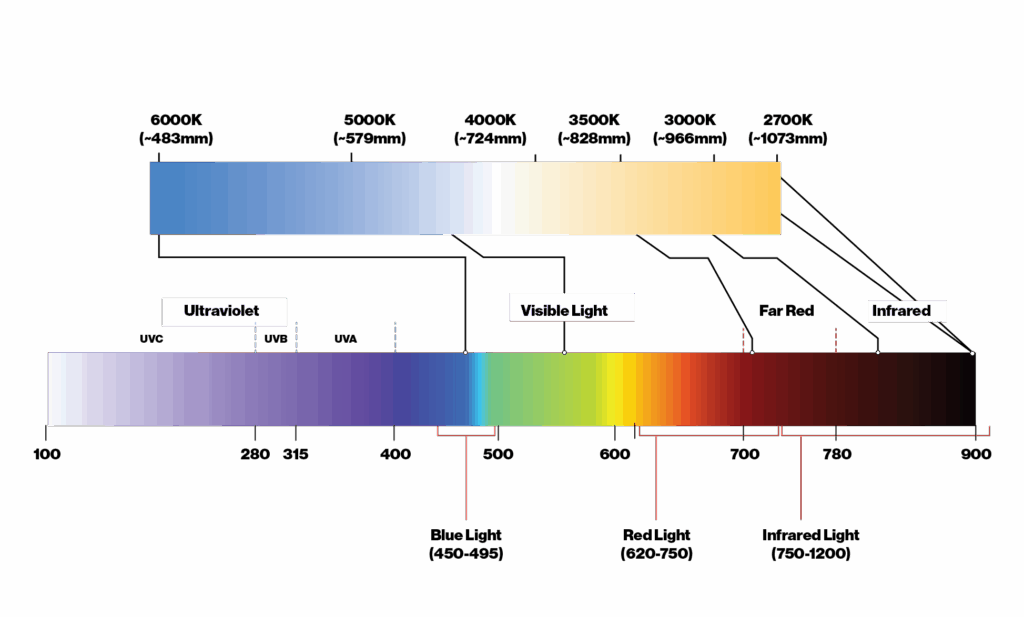As a lighting designer, “quality of light” extends beyond simple illumination. It combines aesthetics, emotional tone, performance, and the biological impact on the human body. Light is not only what allows us to see our world, but it also affects how we feel, heal, and age. This quick read explores how blue, red, and infrared wavelengths of light affect human health, cell regeneration, and eye function, and how these scientific insights can inform better lighting design.

Blue light, with wavelengths ranging from approximately 450 to 495 nanometers, plays a complex and dualistic role in human health. On the beneficial side, exposure to blue light during daytime hours is critical for regulating the circadian rhythm. It enhances alertness, cognitive function, and mood by influencing the body’s melatonin production and sleep-wake cycle. In lighting design, blue-enriched light can be strategically used in morning and afternoon settings, such as offices, classrooms, and commercial spaces, to boost productivity and maintain circadian alignment.
Read the full white paper here.


